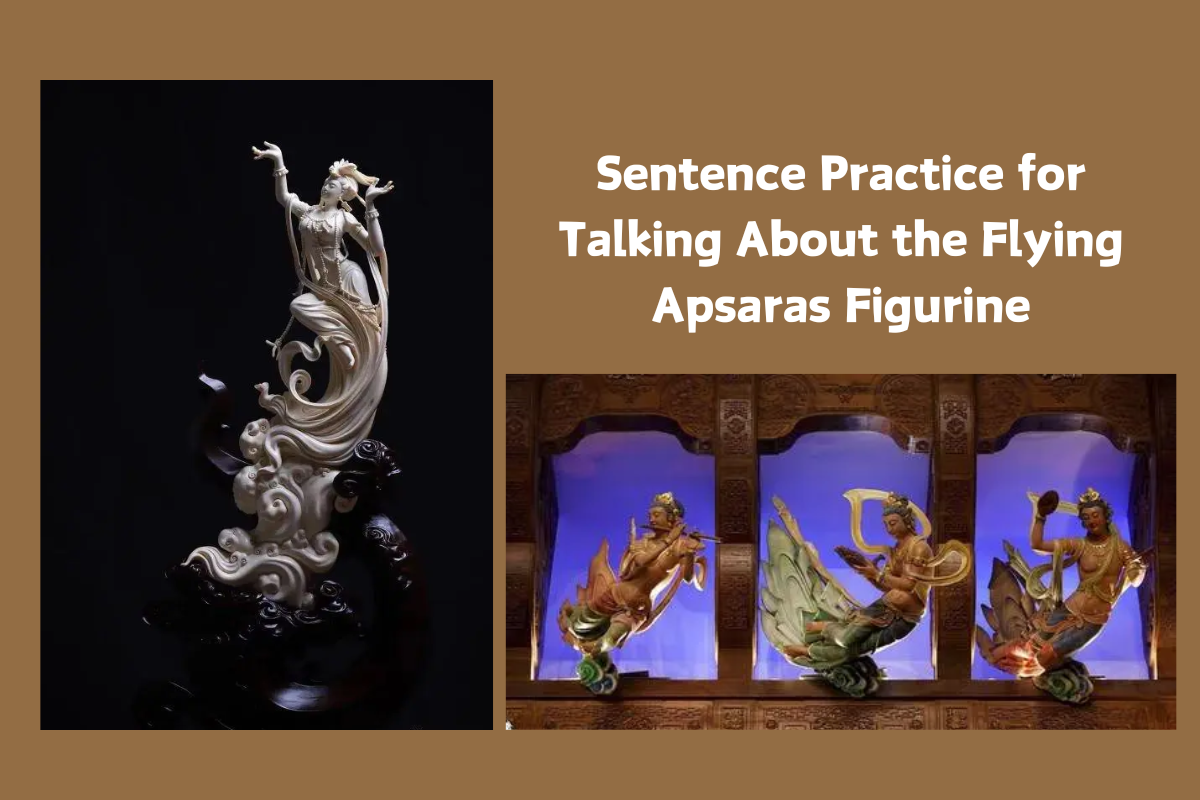Sentence Practice for Talking About the Flying Apsaras Figurine
The Flying Apsaras figurine is a beautiful representation of the celestial beings in Chinese art, often associated with Buddhist culture. Here are some simple sentences to help you discuss this exquisite piece.

Scene 1: Asking About the Figurine
What is the Flying Apsaras figurine?
飞天塑像是什么?
Fēitiān sùxiàng shì shénme?
It is a figurine of a celestial dancer.
它是一个天上的舞者的塑像。
Tā shì yīgè tiān shàng de wǔzhě de sùxiàng.
Where can I find these figurines?
我在哪里可以找到这些塑像?
Wǒ zài nǎlǐ kěyǐ zhǎodào zhèxiē sùxiàng?
You can see them in temples and museums.
你可以在寺庙和博物馆看到它们。
Nǐ kěyǐ zài sìmiào hé bówùguǎn kàndào tāmen.
Scene 2: Discussing the Design
What materials are used for these figurines?
这些塑像用什么材料制作?
Zhèxiē sùxiàng yòng shénme cáiliào zhìzuò?
They are often made of clay or porcelain.
它们通常由泥土或瓷器制成。
Tāmen tōngcháng yóu nítǔ huò cíqì zhìchéng.
The details on this figurine are amazing!
这个塑像上的细节太惊人了!
Zhège sùxiàng shàng de xìjié tài jīngrénle!
Yes, the craftsmanship is very impressive.
是的,工艺非常令人印象深刻。
Shì de, gōngyì fēicháng lìng rén yìnxiàng shēnkè.
Scene 3: Talking About Its Cultural Significance
Why are Flying Apsaras important in Chinese culture?
飞天塑像在中国文化中为什么重要?
Fēitiān sùxiàng zài Zhōngguó wénhuà zhōng wèishéme zhòngyào?
They symbolize beauty and grace in art.
它们在艺术中象征着美丽和优雅。
Tāmen zài yìshù zhōng xiàngzhēngzhe měilì hé yōuyǎ.
Are Flying Apsaras related to Buddhism?
飞天塑像与佛教有关吗?
Fēitiān sùxiàng yǔ Fójiào yǒu guān ma?
Yes, they are often found in Buddhist temples.
是的,它们常常出现在佛教寺庙中。
Shì de, tāmen chángcháng chūxiàn zài Fójiào sìmiào zhōng.